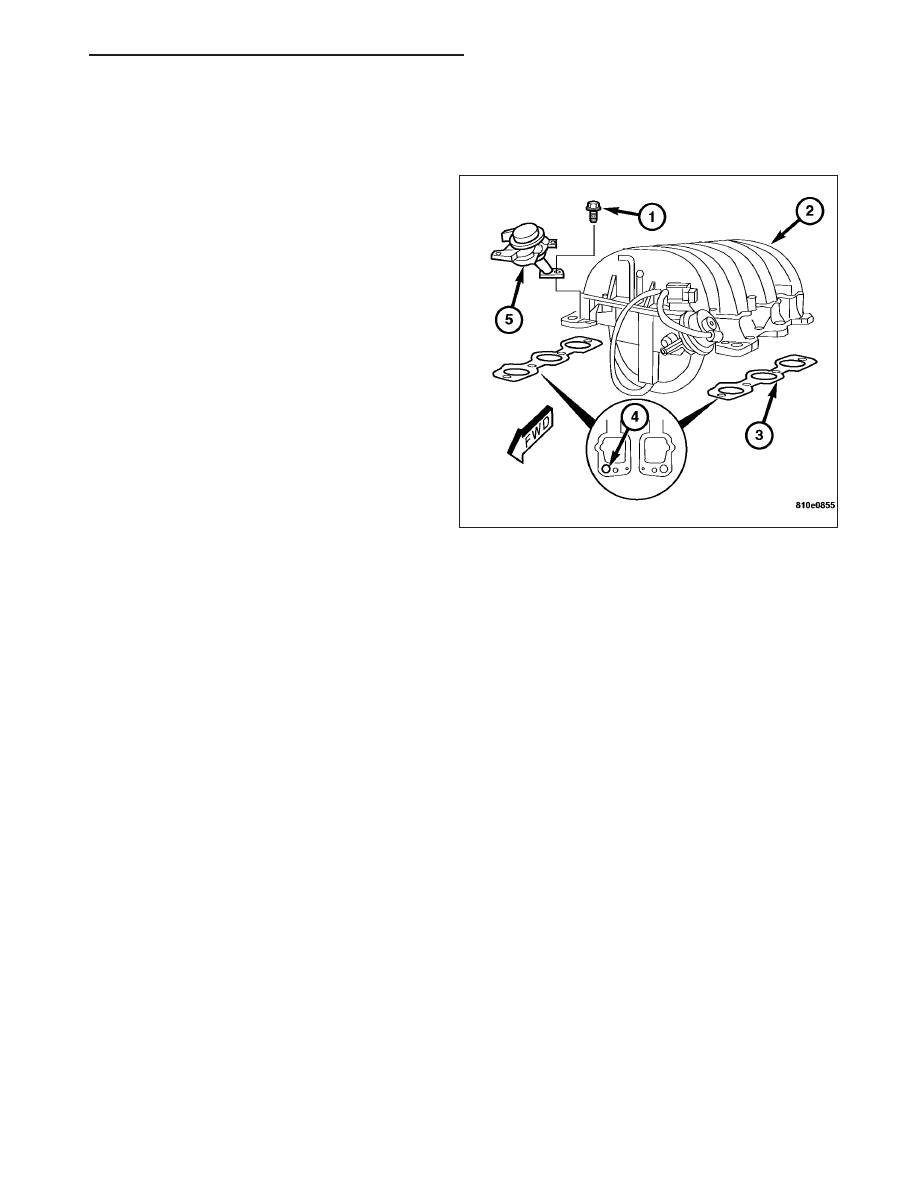Chrysler Crossfire. Manual - part 666

INTAKE MANIFOLD
DESCRIPTION
A magnesium two-stage resonance intake manifold (1)
has long runners to enhance low-speed torque and
shorter runners for added horsepower. The runners,
and the plenum chamber that feeds them, nest
between the cylinder banks. Complex components of
the multi-piece die-cast manifold are adhesive bonded
together.
OPERATION
A variable intake manifold provides a marked supercharging effect to air flow entering the cylinders as the intake
valve closes. Long individual tubes for each cylinder that enhance low-speed torque have a tuned length of 32.9
inches (835 mm). This length is achieved by coiling the tubes in the valley of the cylinder block. In these tubes, the
air rotates 450 degrees from entry to cylinder head. To achieve a similar effect at higher speeds, a tube length of
18.3 inches (465 mm) is used. Butterfly valves in the walls of the long tubes, operated by the engine control com-
puter, switch the flow between long and short flow paths at approximately 3700 rpm. The engine speed for switcho-
ver to the short tubes provides an imperceptible change in engine torque, because the maximum supercharging
effect is consistent throughout the 2000 to 5000-rpm speed range.
DIAGNOSIS AND TESTING - INTAKE MANIFOLD LEAKS
An intake manifold air leak is characterized by lower than normal manifold vacuum. Also, one or more cylinders may
not be functioning.
WARNING: USE EXTREME CAUTION WHEN THE ENGINE IS OPERATING. DO NOT STAND IN A DIRECT LINE
WITH THE FAN. DO NOT PUT YOUR HANDS NEAR THE PULLEYS, BELTS OR THE FAN. DO NOT WEAR
LOOSE CLOTHING.
1. Start the engine.
2. Spray a small stream of water (Spray Bottle) at the suspected leak area.
3. If engine RPM’S change, the area of the suspected leak has been found.
4. Repair as required.
REMOVAL
1. Disconnect the negative battery cable.
2. Remove the air cleaner housing. (Refer to 9 - ENGINE/AIR INTAKE SYSTEM/AIR CLEANER HOUSING -
REMOVAL).
3. Remove the mass air flow sensor. (Refer to 14 - FUEL SYSTEM/FUEL INJECTION/MANIFOLD AIR FLOW
(MAF) SENSOR - REMOVAL).
ZH
ENGINE - 3.2L SERVICE INFORMATION
9 - 809